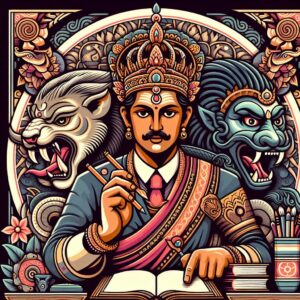Maurya Administration
Central Administration
Maurya’s administration was centralized, autocratic, and welfare-oriented. The concept of the word chakravriti was first written in Arthashastra. The concept of seven organs of the state is written in Arthashastra, of which ministers are also mentioned as one of the organs.
In the inscriptions of Ashoka, the council of ministers is called Parisha to highlight the importance of the council of ministers as a state cannot run on one wheel.
Ministers were appointed after testing their character, which was called Upadha Pariksha.
Ministers of more importance were selected from the Council of Ministers. They were called Mantris whose salary was 48000 Panas per year. The salary of the rest of the ministers was 12800 Panas (silver currency) per year. The department was called Tirtha and when these ministers worked as the head of the department, they were called Tirthadhyaksha.

There is mention of 18 pilgrimage places in Arthashastra.
- Priest: This was an important post during the time of Chandragupta and Bindusara because Chanakya was on this post. But during the time of Ashoka, the importance of this post had decreased.
- Yuvraj
- Commander in Chief
- Pudeshta: Judge of the Kantakgodhan (Criminal) Courts
- Vyavaharik: Judge of Dharmastha (Civil / Revenue) Court.
- Prashastha: Officer who writes government orders
- Aatvik: Forest department officer
- Karmatik: Officer of industries
- Dowaarik Palace Security Officer
- Citizen / Chief Officer of the city.
- The hero who conducted the cry during the war
- Dandpal: The officer who provides arms and ammunition to the army
- Durgpal: Officer of forts.
- Antpal: Officer of the internal forts.
- Officer of the inter-annual king’s bodyguard army.
- The Collector is the Finance Minister.
- Sannidhata Treasurer.
- The Chairman of the Council of Ministers is the chairman of all the ministers.
Apart from this, 26 departments are written whose administration was run by Amatya (similar to modern IAS). Their salary was 1000 Panas per year. – Lakshanaadhyaksh was the officer of Takmal.
- An officer named Rupadarshak used to check the coins.
- Sitadhyaksha is the officer in charge of government land.
- Pawn chairman: Officer of trade and commerce.
- Porter: Officer in charge of measurement and weighing.
- Chief Stamp, Passport Officer.
- Akaradhyaksha X Officer of the Skin Department.